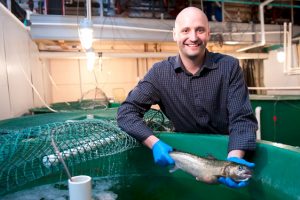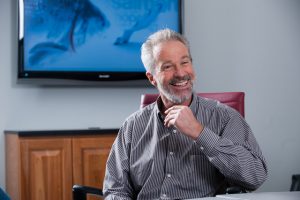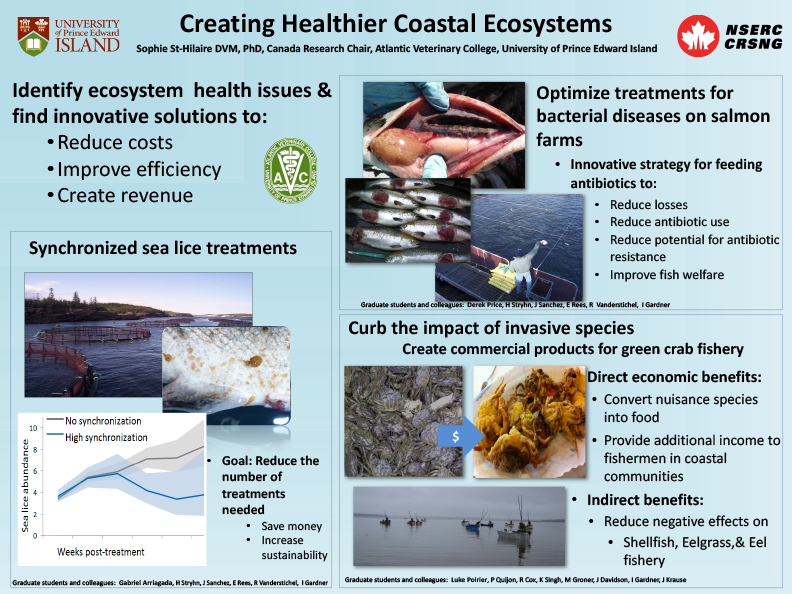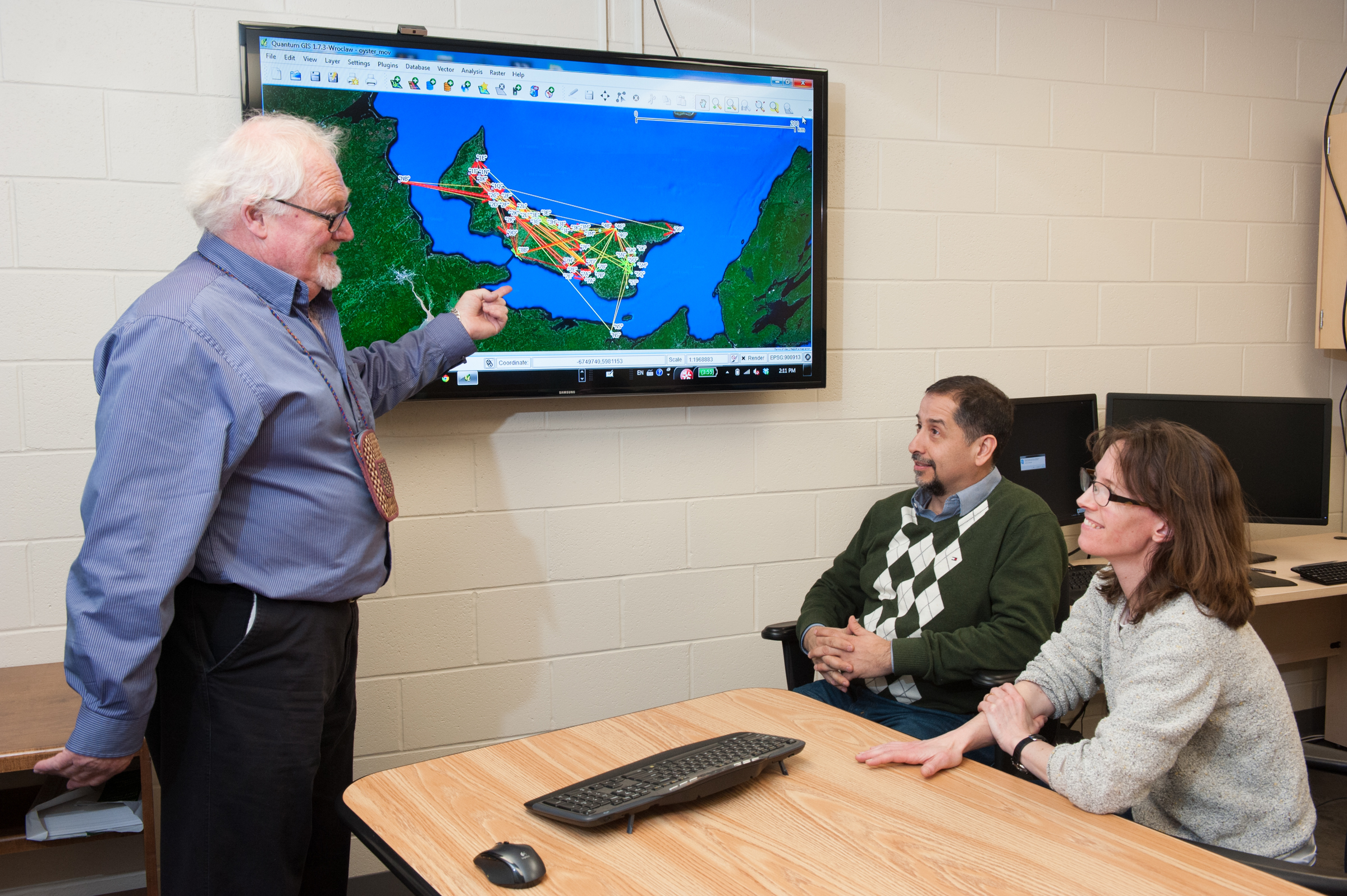
The Atlantic Veterinary College at UPEI is a leader in fish health research
Dr. Alaa Abd-El-Aziz, UPEI’s president and vice-chancellor, joined with leaders across the Atlantic region today to welcome news of the Ocean Supercluster, announced this week by the federal minister of Innovation, Science and Technology, Hon. Navdeep Bains.
The Ocean Supercluster is one of five Innovation Superclusters. The Ocean Supercluster is an industry-led initiative, focused on building upon Canada’s world-class ocean-related business activity, research capacity, and proven technology expertise. Research from UPEI and the Atlantic Veterinary College is already making an impact on Canada’s ocean economy, and this new initiative will only strengthen that impact.
“There isn’t an aspect of the Ocean Supercluster proposal that UPEI cannot strengthen with our research expertise in fish health, climate adaptation, and sustainable design engineering,” said Dr. Abd-El-Aziz. “The student experience at UPEI has been enhanced in recent years through our close relationships with industry. We are ready to build on these relationships and make significant and lasting contributions to this important economic initiative for our region.”
The Ocean Supercluster will harness emerging technologies to strengthen Canada’s ocean industries—industries like marine renewable energy, fisheries, aquaculture, oil and gas, defence, shipbuilding, and transportation. This supercluster will ensure Canada’s future prosperity as a source of jobs and solutions to global challenges, such as how to meet the energy demands of the 21st century.
Over the next ten years, the Ocean Supercluster is expected to create more than 3,000 jobs across the Atlantic region and have an economic impact of more than $14 billion.
Globally recognized for its research and service work in aquatic animal health and epidemiology, UPEI’s Atlantic Veterinary College plays a leading role in aquatic food animal health in Canada and beyond. Housed at AVC is an interconnected network of aquatic research centres and programs, involving internationally renowned researchers who collaborate with industry, government, and academic partners around the world to protect the health and productivity of wild and farmed fisheries. Facilities include state-of-the-art aquatic research laboratories, a 12,000-square-foot aquatic animal facility, and an ISO-17025 accredited diagnostic service.
The University of Prince Edward Island prides itself on people, excellence, and impact and is committed to assisting students reach their full potential in both the classroom and community. With roots stemming from two founding institutions—Prince of Wales College and Saint Dunstan’s University—UPEI has a reputation for academic excellence, research innovation, and creating positive impacts locally, nationally, and internationally. UPEI is the only degree granting institution in the province and is proud to be a key contributor to the growth and prosperity of Prince Edward Island.






